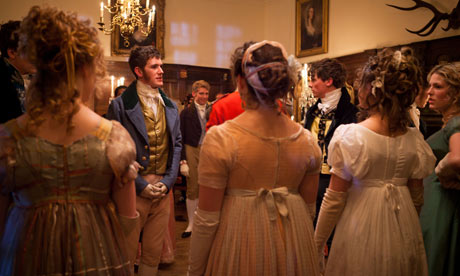For Jane Austen's heroines a ball is a rare chance to mingle with the opposite sex. Now a BBC reconstruction of the Netherfield dance reveals the rigid social conventions that governed regency life

The BBC's Pride And Prejudice: Having A Ball. Photograph: Andrew Hayes-Watkins/BBC/Optomen
In Emma, Jane Austen concedes that it may be just possible to live without dancing. "Instances have been known of young people passing many, many months successively, without being at any ball of any description, and no material injury accrue either to body or mind." But what an empty life! For anyone who still has sap in them, there is nothing like dancing – nothing to rival what Austen calls "the felicities of rapid motion". In Austen's fiction, as in many novels of the 19th century, a ball is the ultimate occasion for a heady kind of courtship – a trying out of partners that is exciting, flirtatious and downright erotic.
In Pride and Prejudice, the complicated mutual attraction of Elizabeth Bennet and Mr Darcy is established through their behaviour towards each other at a succession of balls. They approach and retreat, tease and repel each other, as in an elaborate dance. Among the many media events marking the bicentenary of the publication of Austen's most popular novel, none is more elaborate than BBC2's restaging of the most important of these, the Netherfield ball given by Mr Bingley. It is a gorgeous, telegenic enactment, but also reveals the conventions on which Austen's narrative relies.
More
In Pride and Prejudice, the complicated mutual attraction of Elizabeth Bennet and Mr Darcy is established through their behaviour towards each other at a succession of balls. They approach and retreat, tease and repel each other, as in an elaborate dance. Among the many media events marking the bicentenary of the publication of Austen's most popular novel, none is more elaborate than BBC2's restaging of the most important of these, the Netherfield ball given by Mr Bingley. It is a gorgeous, telegenic enactment, but also reveals the conventions on which Austen's narrative relies.
More

No comments:
Post a Comment